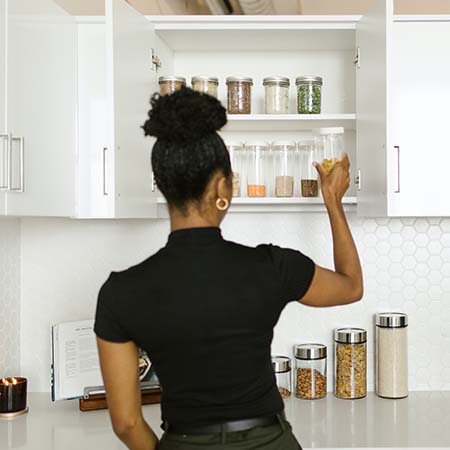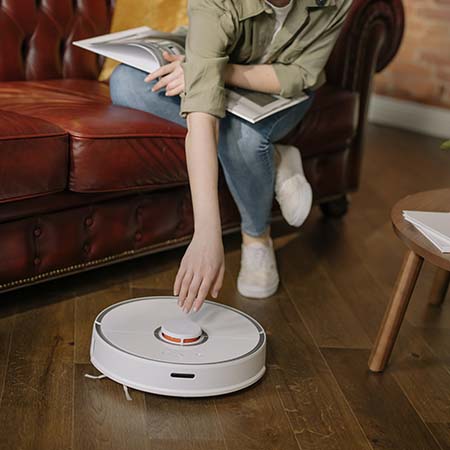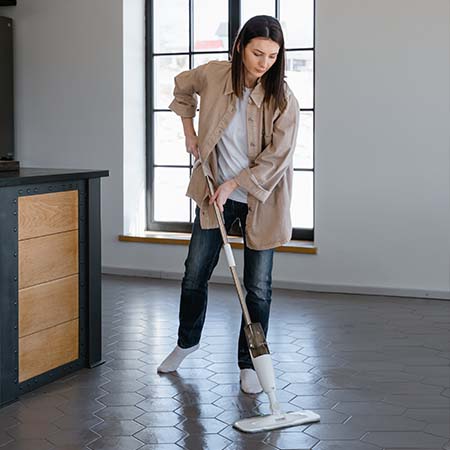House cleaning near me – Insure your kitchen is organized. Then have a schedule to sweep, clean your counters and appliances daily. Mop and wipe down walls and cabinets weekly. Deep clean the kitchen every two to three months. Voila!
You have been trying to keep your kitchen clean for months, but it hasn’t been easy. You wake up every morning and feel overwhelmed by the mess. The kitchen counters are cluttered with dishes. There are crumbs scattered across the floor, and the cabinets are full of expired food and ingredients. You try wiping down the counters and washing dishes right away, but that only takes care of a small part of the problem. You need a long-term plan in order to keep your kitchen clean on a daily basis.
The task of keeping a kitchen clean on a daily basis can be daunting for any parent. Not only are there dishes and messes to clean, but there is also the need to keep the kitchen stocked and organized. Fortunately, there are several easy tips that parents can use to help them keep their kitchens clean daily.

Keeping the kitchen organized makes cleaning easier
1) Keep your kitchen clean by organizing it
The kitchen is often one of the busiest rooms in the house. It’s where we cook meals, eat breakfast and dinner, and do homework. And with all that activity, it’s easy for the kitchen to become cluttered and messy. But a cluttered kitchen can be a dangerous place. Especially if you’re trying to cook a meal.
That’s why it’s important to keep your kitchen organized. When everything has its own place, it’s easier to find what you need and clean up after yourself. Not only will your kitchen be safer and cleaner, but you’ll also be able to cook meals more efficiently. So try organizing your kitchen by using these tips:
• Keep countertops clear by storing dishes in the cabinets or dishwasher
• Use storage containers to organize ingredients in the pantry
• Try to hang pots and pans on hooks behind the stove
• Install a shelf above the sink for extra storage space
The types of bacteria that will grow in your kitchen if it is dirty
Kitchens are hotbeds for bacterial growth if they are not kept clean. Many different types of bacteria can accumulate in a kitchen. Some of these have the potential to cause food borne illnesses. Common culprits include Salmonella, Staphylococcus Aureus, Shigella, E. coli, Campylobacter, and Clostridium Perfringens.
Salmonella is one of the most common causes of food poisoning in humans. It is found in raw poultry, eggs, fish and other animal-based products that have not been cooked properly. Salmonella can be spread through cross-contamination when utensils or cutting boards used for raw meats are used on cooked foods. The bacteria can also be spread by an infected person handling food with their hands. Symptoms of Salmonellosis usually begin 12 to 72 hours after consuming contaminated food and may include abdominal cramps, fever and diarrhea.
Staphylococcus Aureus is also found in kitchen environments where there is poor hygiene. This type of bacteria is often spread through contact with infected persons or contaminated objects such as cutting boards and utensils used to prepare food. When ingested it can cause conditions such as gastroenteritis which involves vomiting, nausea and diarrhea accompanied by abdominal cramps and fever.
Shigella is another bacterium that can be found in kitchens where hygiene practices are deficient or inadequate precautions against cross-contamination are taken during food preparation activities. It is typically spread from person to person but may also be found on surfaces like kitchenware for preparing meals.
Symptoms may include severe diarrhea with or without bloody stools, fever, stomach aches and nausea/vomiting. This typically begins within 24 hours after ingestion but sometimes up to 5 days later. Complications may include dehydration due to loss of fluids through diarrhea.

A magnified view of the E. Coli bacteria
E Coli is a type of bacteria that normally lives in the gut of animals including humans. However certain strains may contaminate foods like ground beef if proper cooking temperatures have not been reached while preparing meals which could result in infection when eaten.
Symptoms include vomiting/diarrhea (occasionally with blood), stomach cramps accompanied by fever. More serious complications such as kidney failure can occur. This is rarer than other issues associated with E Coli infection. In general discomfort & exhaustion due to dehydration mentioned above).
Campylobacter Jejuni – Campylobacters are found in untreated water supplies as well as raw meat products such as chicken & turkey. When mishandled during preparation these foods may become contaminated resulting in illness if consumed.
Symptoms typically start within two days after ingestion & include diarrhea (sometimes bloody), abdominal pain & cramping along with fever & fatigue. If left untreated this infection may last up to 2 weeks but most people recover from it much sooner than that provided they get appropriate treatment promptly upon becoming sick (which includes rest & hydration).
Clostridium Perfringens – These bacteria thrive best at room temperature so they’re particularly successful at surviving on foods that have been left out at parties or buffets without appropriate refrigeration.
Eating contaminated meat dishes results in an illness called ‘food poisoning’ which manifests itself through digestive upset including abdominal pain/cramping accompanied by nausea/vomiting along with diarrhea. This usually resolves itself within 24 hours but could take up three days depending on severity & individual circumstances involved.
Antibiotics may sometimes be prescribed. It’s usually aren’t necessary since these infections tend to resolve themselves without intervention given enough time & rest combined with proper nutrition via drinking plenty fluids!
2) Clean your kitchen counters and appliances daily
First, it is important to wipe down all surfaces including countertops, tables, and appliances after each use. This not only prevents build-up of dirt and dust but also helps prevent the spread of germs and bacteria that may be present on the surface. It is also important to disinfect surfaces using a store-bought cleaner or homemade solution made such as water with bleach or vinegar.
After wiping down all surfaces, it is essential to keep them dry as moisture can promote growth of mold and other organisms that can cause health problems for family members in the house.
It is also important to regularly clean all small appliances such as blenders, mixers, coffee makers and food processors. All removable components should be taken apart and thoroughly washed in hot soapy water before being reassembled back together. These components may also be placed in the dishwasher for extra cleaning power if needed. Glass pot holders should be washed at least once per week in hot soapy water.
Keeping the refrigerator clean is another key factor in maintaining a hygienic kitchen environment as this appliance tends to contain potentially hazardous items like raw meats which can quickly spoil if not stored at the correct temperature. Foods should always be put away promptly after each use and any expired foods discarded immediately to prevent bacteria growth.
The inside shelves should also be wiped down with a damp cloth during the deep cleaning process to remove any spills or residue that may have built up over time which could cause contamination if left unchecked for too long.
Lastly, condiments like ketchup, mustard or relish should be kept in airtight containers. That way, they stay fresh longer without spoiling quickly from exposure to air or moisture.

Robots may help sweep floors
3) Sweep the floors daily
Sweeping the floors daily is an essential part of keeping any kitchen clean and organized. This task is important for several reasons. Removing food debris from the floor, prevents the spread of crumbs, dirt. It also keeps the rodents at bay.
This helps to create a pleasant atmosphere in the kitchen space. Not only does sweeping help maintain a clean environment, it can also be used as a preventative measure against bacteria growth that can arise from food particles left on the floor.
Sweeping also helps to pick up dust particles that accumulate over time which can create health problems if left unchecked. A regular sweeping routine will keep the air quality in your home at its best.
The type of broom used to sweep is dependent on the type of flooring being cleaned. For tile or hardwood floors, a soft-bristled broom with long bristles works best while carpeted surfaces should be cleaned using a vacuum cleaner whenever possible. Or at the very least, give it a sweep with a regular broom.
The cordless electric vacuum cleaner may be an advance way to clean hard surfaces such as wood, tile and laminate panels. These devices are designed to sweep up dust with ease with their powerful suction capabilities.
Finally, if you’re looking for an efficient way of sweeping your kitchen floor without lifting a finger then consider purchasing an automated robotic vacuum cleaner. This device is designed specifically for households with small square footage. Its dual rotating brushes work together to loosen dirt from carpets or hard floors. Its suction sucks up debris and deposits it into an easy-to-empty dust bin at the end of each cycle. The robot vacuum can be programmed according to specific user settings so you never have worry about manually sweeping again! Check out these robot vacuums.
4) Wipe down the cabinets and walls weekly
Cleaning cabinets and walls is a vital part of maintaining a clean and organized kitchen. While it can be tedious, it is essential to ensure the food stored inside remains safe for consumption. A parent can quickly clean these surfaces to keep them looking neat and tidy with some simple steps.
First, it is important to wipe down all surfaces using a damp cloth or sponge in order to remove dust and debris that may have built up over time. For more stubborn grime, a mild detergent solution may be necessary as well as a scrub brush.
After wiping down the surface, it is important to dry it completely with either paper towels or a lint-free cloth in order to prevent mold or water spots from forming on the cabinet/walls.
Cabinets and walls tend to get dirty over time due to everyday use. Sticky fingers, airborne dust particles, cooking splatters, grease buildup, pet fur and many other factors can contribute to dirt accumulation.
It needs to be addressed regularly in order for a kitchen environment to remain healthy. Furthermore, certain materials used in construction such as wood paneling are especially susceptible to dirt buildup because they are porous so they require extra attention when cleaning .

Mopping weekly can help keep your kitchen looking clean
5) Mop the floor weekly
Moping the floor weekly is essential to maintaining a healthy kitchen environment. While sweeping helps to remove dirt, dust and food particles, mopping will help sanitize the floor surface and remove bacteria that can contribute to serious health issues if left unchecked.
When it comes to moping, there are several different types of products available for parents to make this job easier!
Traditional mops with a long handle and absorbent sponge head can be used for larger areas like kitchens and dining rooms, but for smaller surface areas or getting into tight corners opt for an smaller mop as seen in the photo. These devices can hold the solution in a container. The solution can be applied with a squeeze of a trigger.
Finally, don’t forget about microfiber mops. These are great all-purpose cleaning tools that can efficiently wipe away spills without leaving streaks or residue behind. They work especially well when combined with a mild detergent solution for tougher messes like grease stains!
Be sure to check out these products at Canadian Tire to get an idea on what is out there in today’s market. Note, we do not get a commission whatsoever.
6) Deep clean your kitchen every 2-3 months
Deep cleaning your kitchen every 2-3 months is essential for keeping a healthy and hygienic environment in the home. It helps to eliminate and prevent the build-up of dirt, dust, and grease that can accumulate over time. Remember to get into hard to reach places with special cleaning agents that are designed to effectively remove bacteria and other sources of contamination from surfaces. Additionally, deep cleaning helps to restore the look of kitchen cabinets, countertops, appliances, and floors; providing a fresher appearance that will instantly boost any kitchen’s overall aesthetic appeal.
Furthermore, regular deep cleaning ensures that all appliances are operating efficiently by removing built up residue or debris from their motors & filters which could otherwise impede performance. This is especially important for those with high efficiency appliances like dishwashers or washing machines as these require extra maintenance over time in order to stay efficient and continue to deliver optimal results. As an added bonus for those with gas stoves – regular deep cleanings can help stop potential fires caused by grease build up in oven hoods & burners!
Finally, routine deep cleanings help ensure a safe food preparation environment at all times by eliminating potential sources of cross-contamination between raw foods like meat or eggs with cooked dishes like vegetables & soups.
Deep cleaning is very important when it comes to protecting yourself and your family from food-borne illnesses. It also allow you to perform spot checks on various cooking utensils & containers which may have been used over extended periods of time without proper sanitization. This is an often overlooked step but one that should never be neglected when it comes to maintaining a healthy kitchen!
Conclusion
Keeping a kitchen clean and hygienic doesn’t have to be a chore. With the right equipment, regular maintenance, and some helpful tips you can easily maintain a spotless kitchen all year round. The key is to find what works best for your lifestyle and develop routines that are easy to maintain over time. Whether it’s investing in an automated robotic vacuum cleaner or just remembering to deep clean every few months. There are plenty of simple solutions that can help keep your kitchen looking its best!
By following these guidelines you can be sure that your kitchen will remain safe, healthy, and sparkling clean for years to come! With just a little bit of effort, anyone can have an immaculate kitchen that their family, friends, and guests can enjoy. So don’t wait any longer – start cleaning today!
If you enjoyed this read, be sure to check out our other articles such as: “How to cleaners kill bacteria?” and “5 ways baking soda can be used as a cleaner” – House cleaning near me

House cleaning near me – If you’d like us to handle all of your cleaning, drop us a line!
House cleaning near me
The Cleaning Tribe can help parents keep their kitchen clean and hygienic all year round with their professional deep cleaning services. Our experienced and knowledgeable team of cleaners specializes in cleaning residential homes. We treat every surface with the utmost care, using the proper tools and cleaning agents designed to effectively remove dirt, dust, grease, and other sources of contamination from surfaces.
For added convenience, the Cleaning Tribe also offers recurring services so you can schedule regular deep cleanings according to your own specific needs. This ensures that your kitchen always looks its best! With the Cleaning Tribe’s professional deep cleaning services you’ll never have to worry about maintaining a spotless kitchen again.
Trust our experienced team of cleaners and enjoy the peace of mind knowing that your home is in good hands! Get a free quote here in sixty seconds or call us on our 24/7 live number at 416-292-0032! – House cleaning near me
